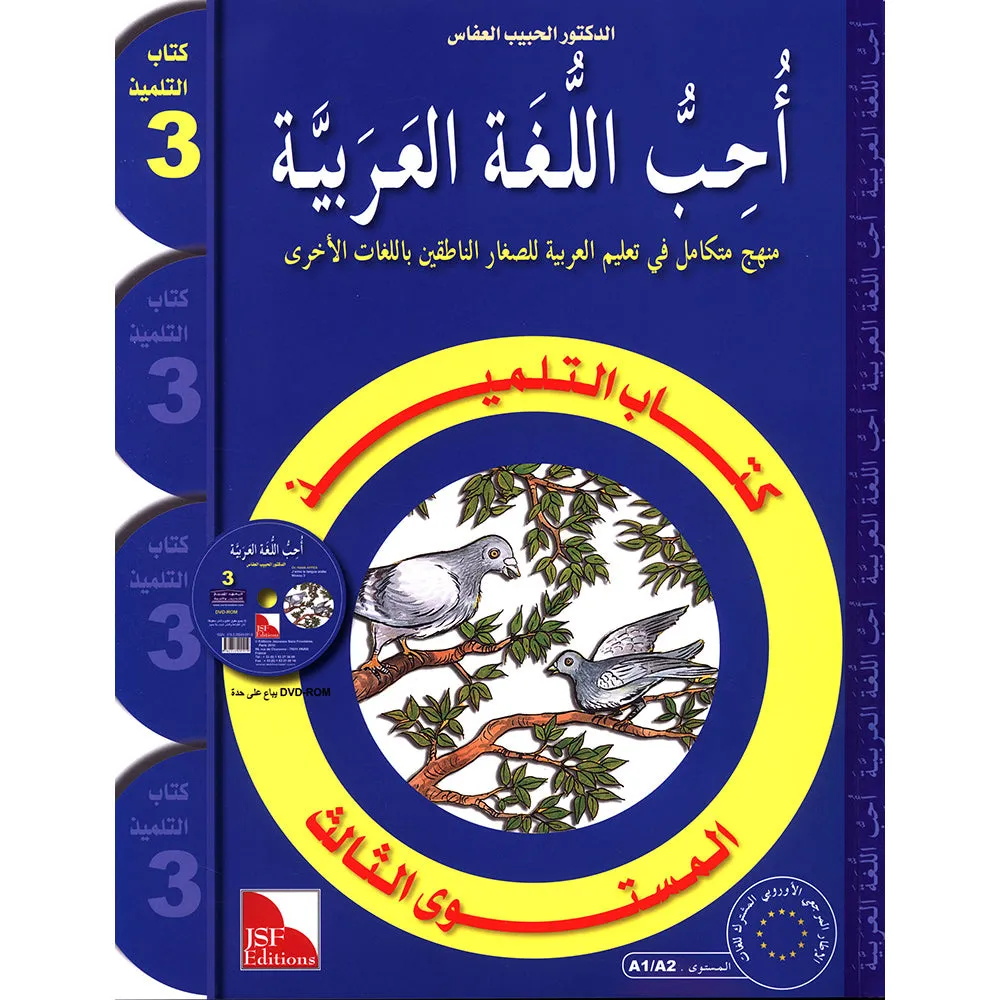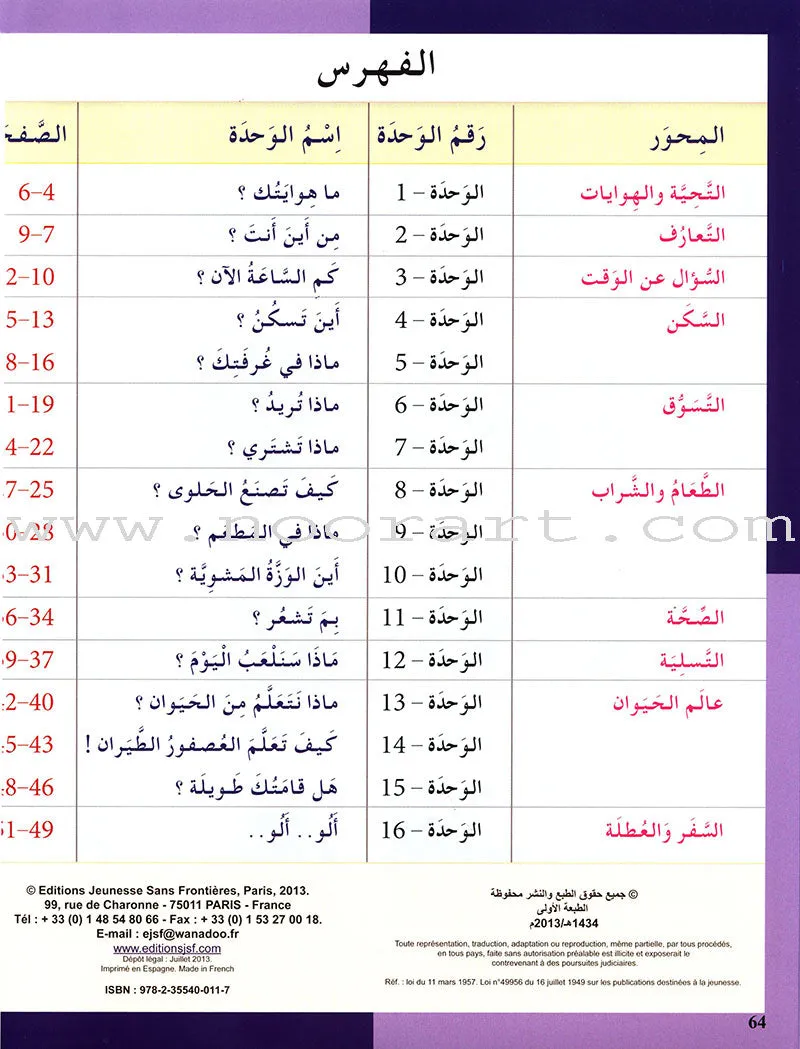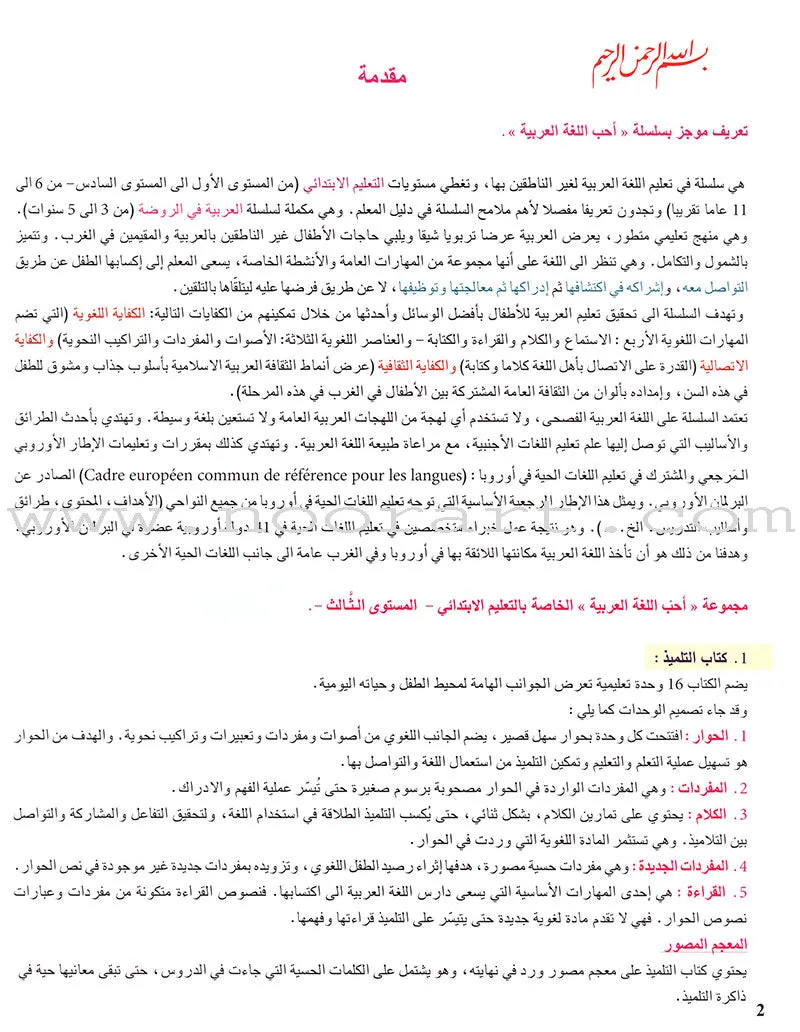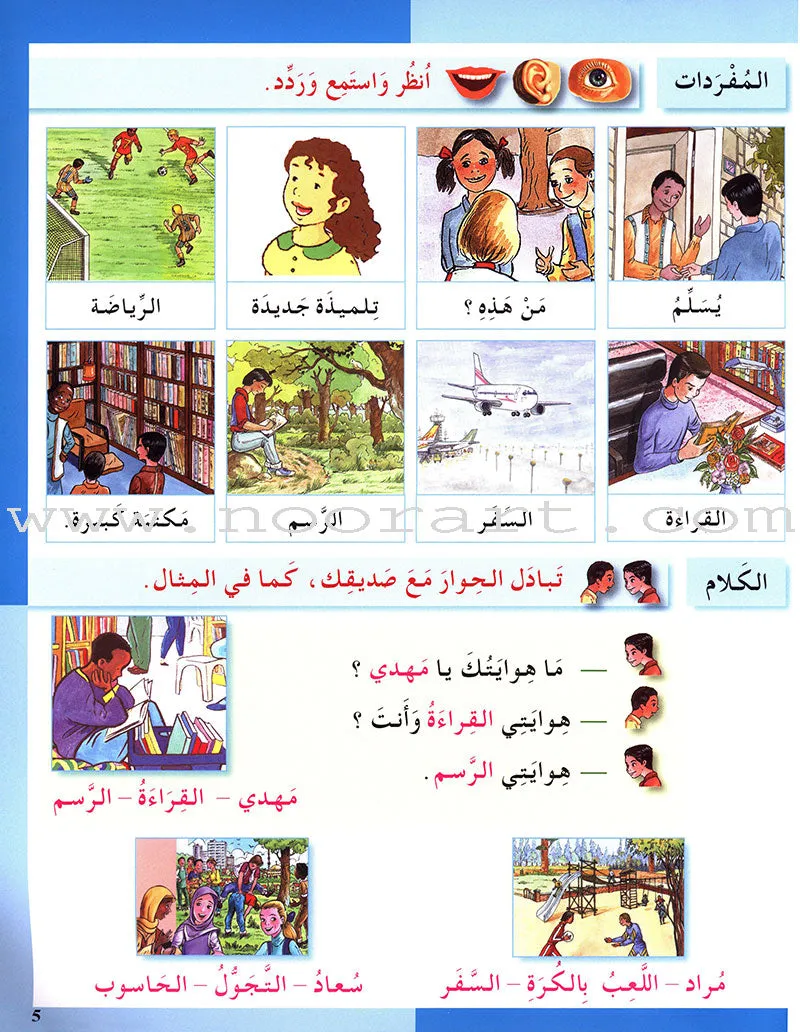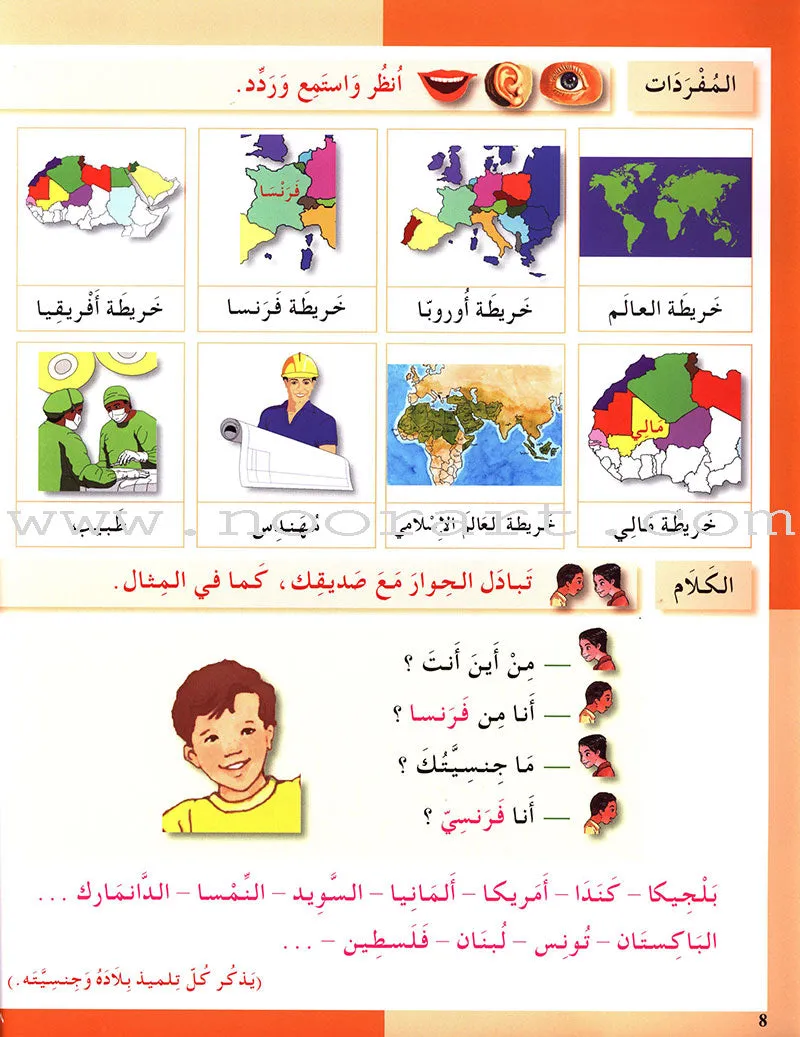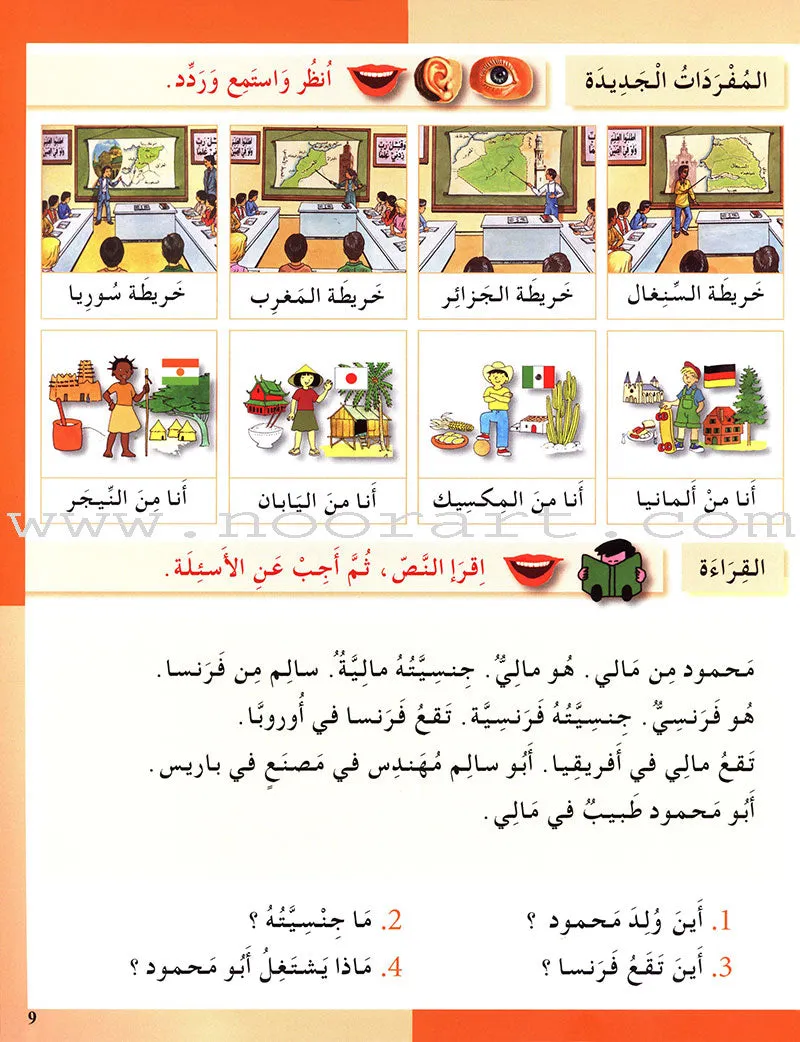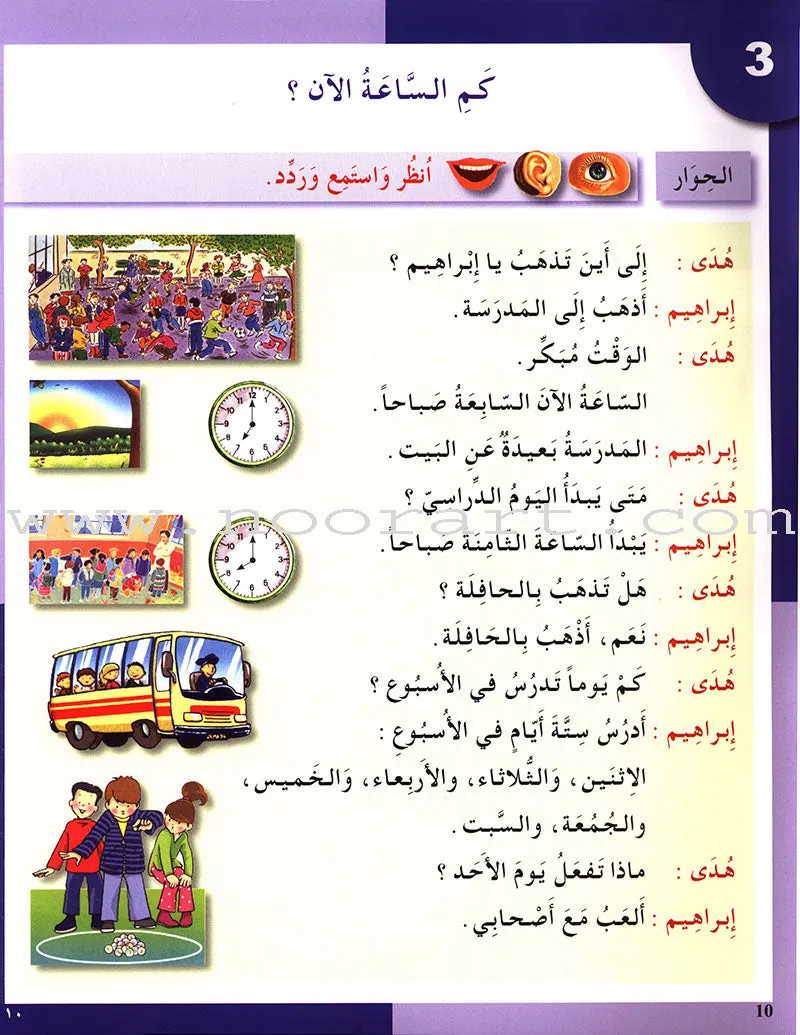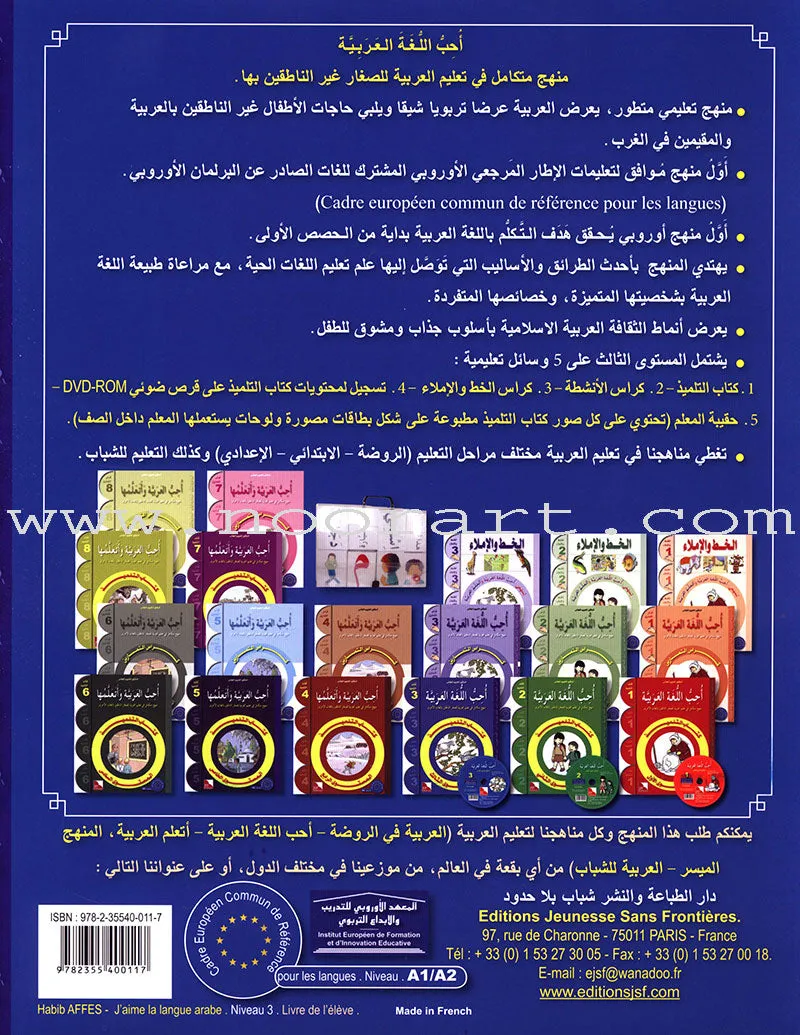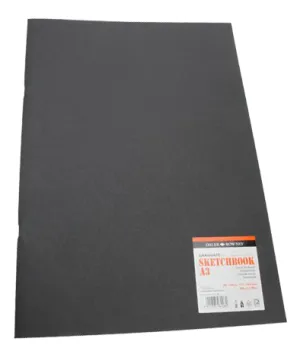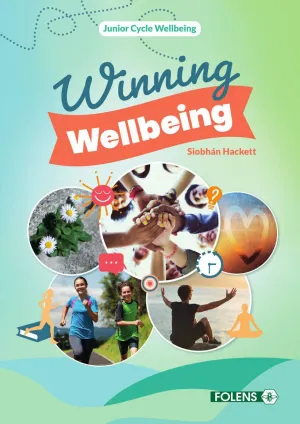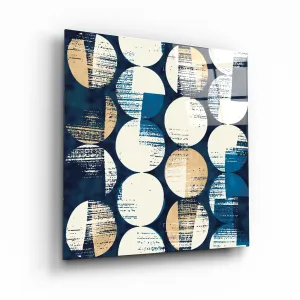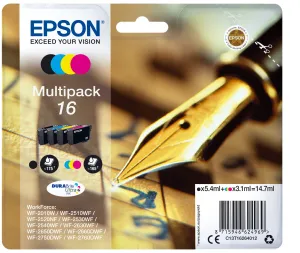- Reading techniques are developed through the study of a wide selection of authentic reading passages, including classic Arabic without concentration on spoken dialect. Regular vocabulary exercises examine word building techniques.
- Careful balances of authentic and scripted listening materials build confidence whilst offering the ability to communicate with native Arabic speakers.
- A presentation of Arabic culture patterns help Western children to connect with their Arabic speaking peers in other parts of the world.
- Reading Dialogue: Simple and short passages comprising linguistic structures of sounds, vocabulary, expressions, and syntax structures, aim to facilitate learning by teaching the language process and communication.
- Vocabulary: Vocabulary words are taken directly from reading dialogue. They are combined with graphics to further student understanding and sensory perception.
- Conversation: Conversational exercises encourage students to participate in classroom activities, apply reading material within dialogue, and ultimately become fluent speakers.
- Illustrated Dictionary: An illustrated dictionary appears at the end of the workbook and includes word sets found throughout the lessons making memorization easy.
- Listening Comprehension: Exercises aimed at determining the level of children’s comprehension for new vocabularies and expressions.
- Reading Comprehension: Exercises aimed at determining the level of children’s comprehension for the meaning of dialogue expressions.
- Vocabulary: New vocabulary is listed to help with student memorization.
- New Phrases: More exercises to support the student text.
- Writing Composition: This section focuses on word expressions and sentences to reinforce more complete writing skills.
- Grammar: A special concentration of theory and practice make learning grammar easier to understand.
4. Teacher Case: Consists of:
- Teacher Guide: Tips on efficient teaching practices.
- Posters to be used as classroom visual aids.
- Audio tapes.




